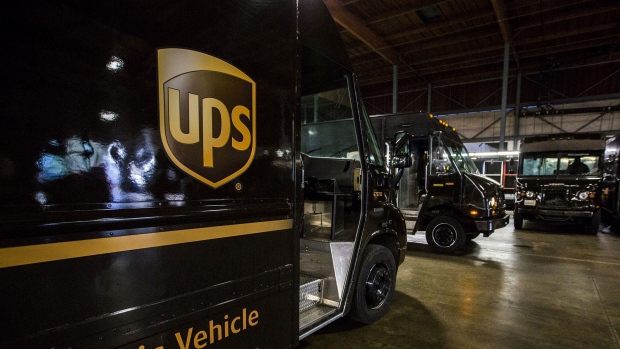Aug 7, 2020
UPS, FedEx flex price power on delivery surge, driving up shares
, Bloomberg News

United Parcel Service Inc. and FedEx Corp. shares jumped after the couriers said they are raising prices aggressively to boost profit and help manage an avalanche of residential deliveries spurred by the coronavirus pandemic.
UPS plans to apply holiday season surcharges of as much as US$4 a package for shippers that send more than 25,000 parcels a week and whose peak-season volume is triple February’s level. On the low end, the charge is US$1 a package for ground deliveries for shippers with volume at least 10 per cent above February’s level. UPS, which skipped the peak-season fees last year, charged less than US$1 extra per package in 2018.
FedEx will boost international surcharges on select routes beginning Aug. 10. Deliveries to the U.S. from Hong Kong will double to US$2 a kilo and from Taiwan will jump to US$1 from 22 cents. FedEx has said it plans to apply holiday surcharges as well.
UPS, FedEx and other couriers have been hit with unprecedented residential package volume amid the pandemic. Deliveries to homes can be more costly than those to businesses because there are typically fewer packages per stop and more distance between locations.
The surge in demand has given couriers leverage to raise prices, however. UPS’s average U.S. volume climbed 23 per cent in the second quarter from a year earlier, and FedEx U.S. ground deliveries jumped 20 per cent in its latest quarter.
UPS increased 7.4 per cent to US$156.19 at 12:54 p.m. in New York, while FedEx climbed 5.3 per cent to US$181.37. UPS advanced 24 per cent this year through Thursday, while FedEx gained 14 per cent and the S&P 500 rose 3.7 per cent.
“The peak surcharges reflect current market conditions caused by the pandemic, which includes consumer demand and available capacity,” Atlanta-based UPS said by email Friday. The fees will “help balance the volume in UPS’s network so we can provide the best possible service.”
Its holiday surcharges apply from Nov. 15 to Jan. 16. From Oct. 4 through Jan. 16, the company will also charge US$50 for each large package and US$250 for deliveries that exceed maximum limits, according to UPS’s website.
“The companies that are going to be hurt by these surcharges are the companies that can least afford it at this point, and that’s retailers,” said John Haber, chief executive officer of Spend Management Experts, a package shipping consulting firm.
Many retailers have turned to e-commerce as a lifeline while customers stayed away from stores because of the virus, he said, and only strong merchants such as Amazon.com Inc. and Walmart Inc. will likely be able absorb the surcharges without passing them on to customers.
FedEx began to apply international surcharges in April as volumes jumped and commercial airlines, which carry some cargo in the belly of their planes, reduced flights dramatically. The company is incurring extra costs because of virus-related restrictions by countries seeking to contain the spread.
“Those restrictions continue to disrupt the global supply chain,” the Memphis, Tennessee-based company said by email. “Air cargo capacity is limited, and we are incurring incremental costs as we adjust our international networks.”
FedEx and UPS aren’t expected to boost capacity much in the medium term, said Stephens analyst Jack Atkins. Combined with the surge in residential packages and international demand, that means the couriers will have the upper hand on price for a while, he said in a note Friday before the surcharges were announced.
“We believe the pricing story in parcel has legs,” he wrote.



